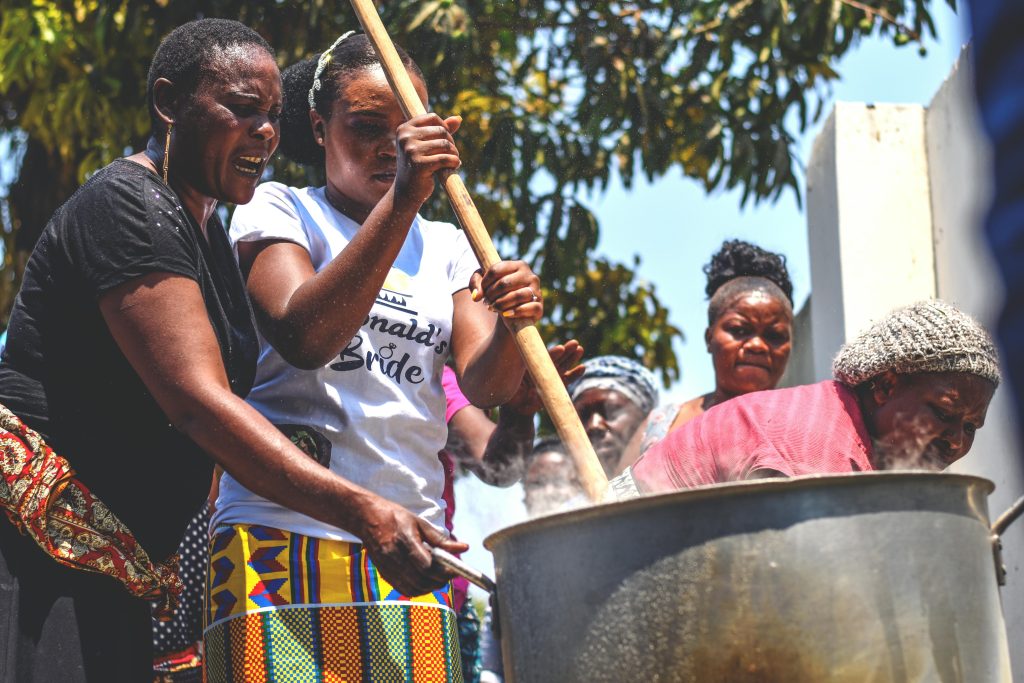
African Cuisine: A Journey Through the Continent’s Diverse Food Cultures
Author: Taofeeqat Adigun
Imagine the warmth of freshly baked bread, the scent of cooking stews, and taking your first chew of an evenly spiced Suya skewer. African cuisine is more than just food on a plate; it’s the history and identity of many different generations of cooks who have handed down their recipes over the years.
Africa’s culinary landscape is as diverse as its people, with each region offering a unique set of flavours and ingredients. Take a journey to West Africa, and you’ll quickly understand how food is fundamental to community life. The tantalising aroma of Jollof rice floating through the air—a dish so loved it has ignited friendly rivalries between countries like Nigeria and Ghana—is just one example. On the surface, it’s a simple dish—rice cooked with tomatoes, onions, and a blend of spices—but each cook and each country in West Africa has its own twist, making it special. When it’s served, it’s not just about the food on your plate; it’s about sharing a meal with family and friends—a celebration of togetherness.
Head east, and the flavours shift, but the heart of African cuisine remains the same. Along the coast, where the influence of Indian and Arab traders is still felt, you might enjoy a plate of spicy Nyama Choma—grilled meat marinated with local spices and cooked to perfection. And let’s not forget legends like Injera, a spongy, sourdough flatbread, or Ugali, the ultimate comfort food in East Africa. Both dishes bring warmth to the table, offering simplicity paired with rich, flavourful stews.
Move up north, and you enter a world where African and Mediterranean flavours collide. Think of the rich, aromatic Tagines of Morocco, slow-cooked in earthenware pots until the meat is so tender it practically melts in your mouth. Or imagine sitting down to a plate of Couscous, each tiny grain steamed to fluffy perfection and served with chicken, vegetables, and a drizzle of olive oil. These dishes are a testament to North Africa’s long history of trade and cultural exchange, offering a taste of the past and a symbol of hospitality.
In Southern Africa, the cuisine tells the story of a region shaped by diverse influences. Take Braai, for example. It’s more than just a barbecue; it’s a way of life. The smell of meat grilling over an open flame, the sound of laughter as people gather around the fire—it’s a scene repeated across the region. Braai is more than just a method of cooking—it’s a cultural ritual that brings people together. And then there’s Bunny Chow, a dish that could only have been born on the streets of South Africa. Picture a loaf of bread hollowed out and filled with spicy curry—a nod to the Indian community, now part of the country’s cultural fabric.
And let’s not forget Central Africa, where the food is as comforting as the people who make it. Dishes like Fufu and Moambe chicken stick to your ribs and warm your soul. Fufu, made from cassava or yams, is dense and starchy, the perfect accompaniment to a rich, flavourful soup. Moambe chicken, with its creamy palm butter sauce, is the kind of dish that makes you feel at home, no matter where you’re from. These foods are shaped by the seasons, history, and traditions of the people who live there.
As African cuisine evolves, it’s making its mark on the global culinary scene. The African diaspora has played a significant role in spreading these flavours worldwide, introducing global audiences to the rich culinary traditions of Africa. From the busy street food markets of Lagos to the upscale Afro-fusion restaurants in New York and London, African cuisine is gaining recognition for its diversity, creativity, and cultural importance.
Whether you’re tucking into a plate of spicy Jollof rice or savouring the last bite of a Tagine, know that you’re not just eating a meal—you’re tasting the heart and soul of Africa.